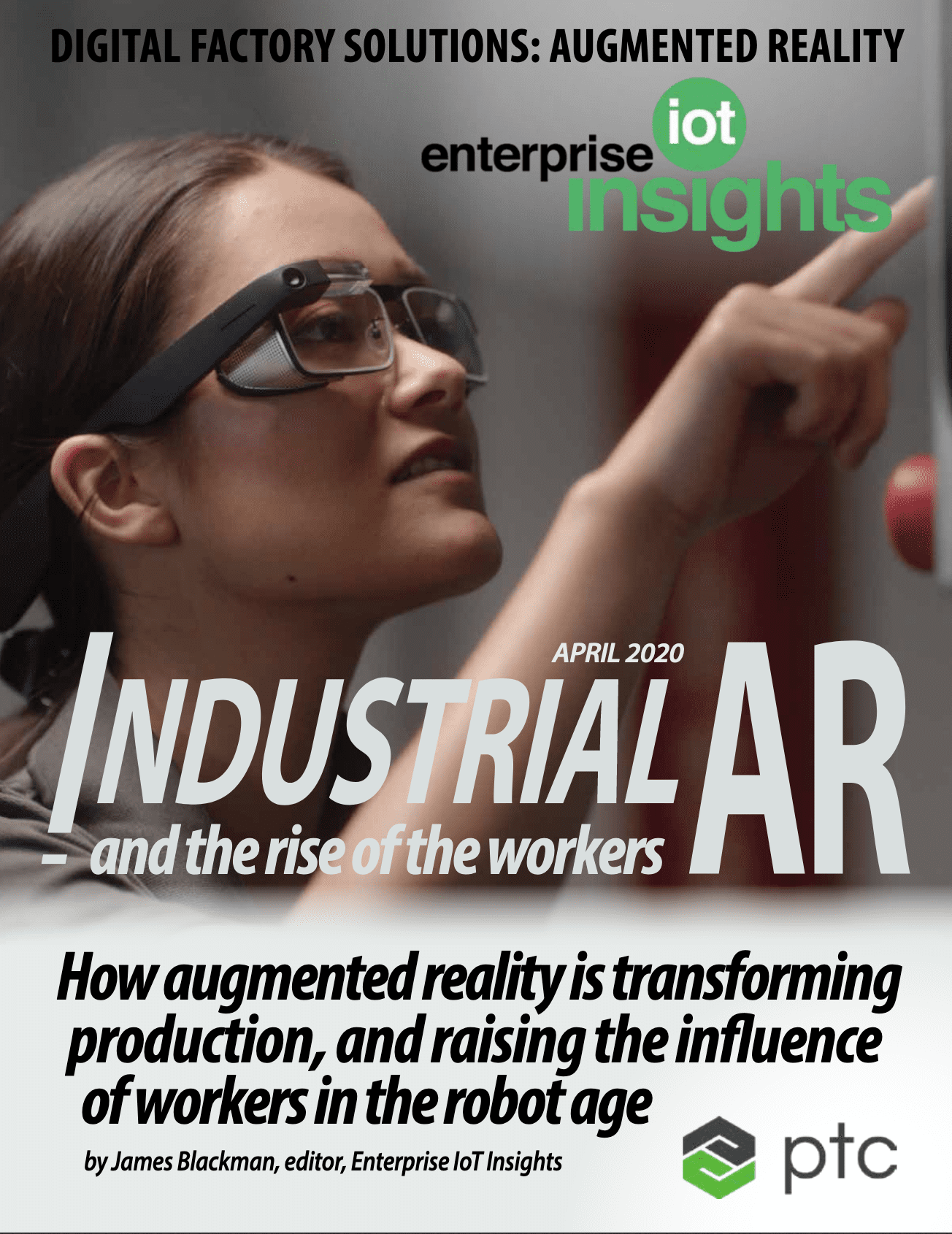In research for a new report on industrial AR, Enterprise IoT Insights caught up with Ian Henderson, chief technologist for manufacturing at Hewlett Packard Enterprise, to discuss the challenges with contemporary AR (and VR) setups in the industrial space. Here is the interview, in full; the new report – Industrial AR, and the rise of the workers – is available to download here.
How are AR and VR being used today in manufacturing and production?
“VR is seeing increasing use for training environments particularly for training in what would be a hazardous environment. As the VR user is fully immersed it has limited us in the factory but it can be used to simulate a worker in a production cell allowing optimisation to be completed in a virtual model built as a digital twin of the physical world.
“We have completed a number of pilot projects with AR to give guidance in a manufacturing process or maintenance task mostly for training purposes. As an initial stage we have a number of customers using head mounted displays and mobile devices to provide remote assistance.
“HPE Visual Remote Guidance (VRG) is used by HP to support customers with their large format printers. HP is able to have a second or third line support member virtually in the customer’s facility, helping the customer get back online reducing downtime and eliminating travel cost.

“This solution is also in use in manufacturing, retail and automotive sectors. We see this as a first step to adding more advanced AR use cases.
“The Covid-19 situation has caused difficulty in workers being able to travel. VRG can enable a remote expert to guide the end user through resolution of an issue or to allow groups of remote staff to evaluate a situation without the need to travel. While we often work with head mounted displays this solution functions well on an existing phone or tablet.”
What is the potential – how will AR and VR be used in the future?
“Most of the solutions today are used for training or simulation of a facility and this will continue to be the case for a VR solution. AR brings many more opportunities to provide the user with additional data and visualisations to be guided through an assembly process, visualise machine operational data, a maintenance procedure and other use cases.
“To do this the devices need to develop to be unobtrusive and comfortable to use for the entire working day.”
How is the experience, today? Does the technology work well and easily? How clunky are headsets, and how prohibitive is the pricing?
“The cost of headsets is coming down and the resolution and performance is increasing but many of the current solutions may not be rugged enough for use in an industrial environment or may not be practical to use in conjunction with the required PPE.”
What are the challenges from a behavioural point? Do staff like the tech?
“Younger staff who are digital natives adopt the technology readily, it is not really practical to wear many of the current devices for extended periods of time and some also cause problems when used with PPE.
“Many of the VR solutions are not comfortable to use for long periods of time. They bring value today for simulation or training but are not yet at a point that they could be used all day for a guided assembly process for example.”
What are the requirements on connectivity? Is a wired connection preferred? Will LTE suffice? Will 5G make this more viable?
“Both AR and VR can require low latency and high bandwidth connectivity. With VR in particular if the display is not refreshed at a high rate it can make the user feel nauseous. The compute platform also needs to be close to the user; most AR solutions are hard wired today.
“AR use cases are a little more forgiving and some can run over an LTE connection. 5G may help here but many industrial facilities have limited internal mobile signal so WiFi is a better alternative.
“Developments in WiFi 6 will allow the greater bandwidth and lower latency that is required we have added additional optimisation with Aruba AirSlice to allow optimisation for a specific application enabling more freedom in the use of both techniques.”
What are the requirements on edge processing? Where is the edge for AR and VR – on the device, on site, in the mobile network, in the cloud?
“Most VR solutions are connected directly to an edge compute solution, while there are some streaming video games available the latency would make them very unpleasant to use for VR.
“Many current AR solutions are simple animations that can be streamed or even stored on the mobile device. We have completed a proof of concept that added real time video analytics to an AR use case using edge compute platforms.”
Who are you working with on this? How are they using these solutions?
“We have been working with RealWear and their HMT-1 device to support our VRG solution as well as AR solutions like PTC Vuforia. The HMT-1 is lightweight and uses a small screen just out of line of sight. We have enabled integration with voice control so that the engineer can have both hands free and wear all required PPE.
“Groupe PSA, which owns car brands Peugeot, Citroën, DS Automobiles, OPEL, and Vauxhall initiated its Glasses Assist project with RealWear in March 2018. The solution, which was deployed in 80% of the company’s factories to date with plans to expand, currently runs HPE Visual Remote Guidance (VRG).”
Check out the editorial report on industrial AR, Industrial AR – and the rise of the workers. The report is available to download here.


